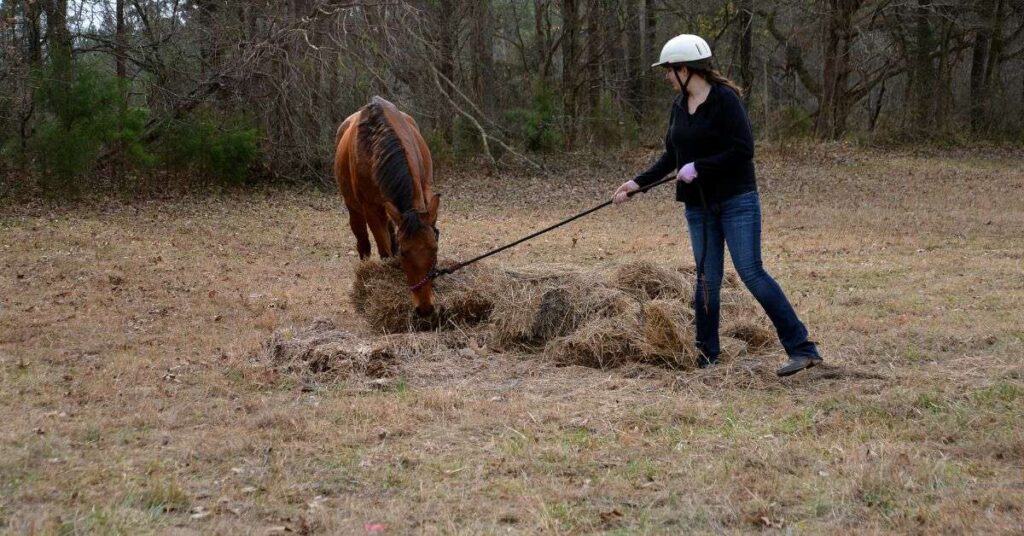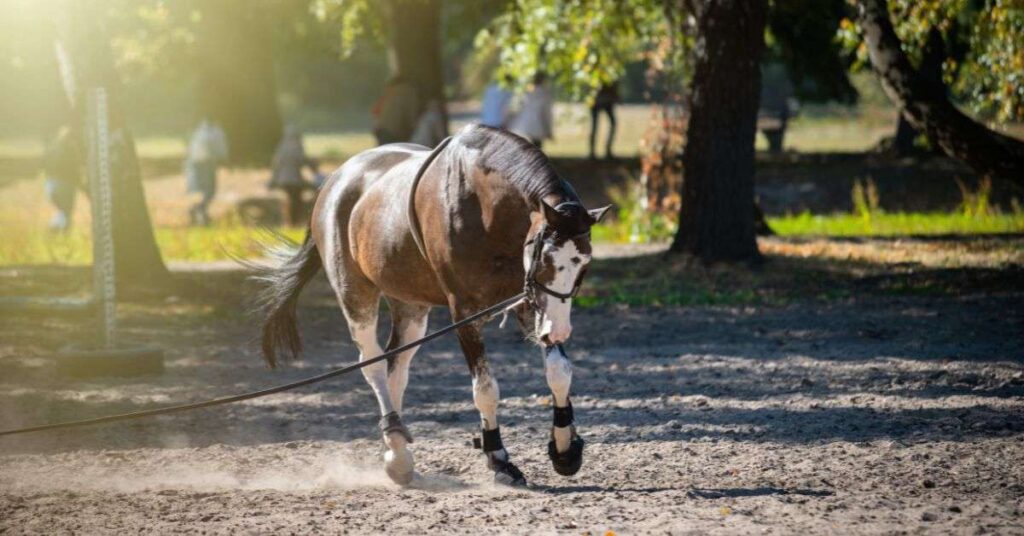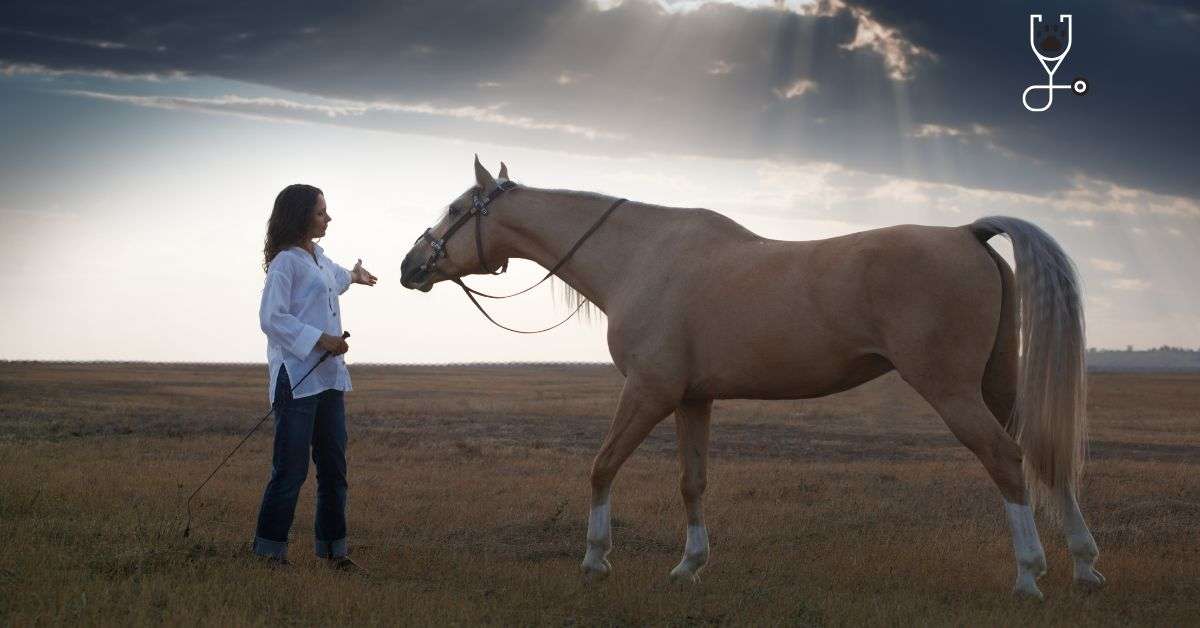Horses have been used for work and transportation for centuries, and as a result, human beings have been training them since. While the methods of horse training have evolved over time, one issue has remained contentious: when does discipline become abuse? This is a difficult question to answer, as it can depend on individual circumstances. However, there are some general guidelines that can help provide clarity.

Disciplining horses should always be done with their welfare in mind, and never reach a point where the animal is harmed or feels scared. If you’re ever unsure about whether you’re crossing this line, it’s best to err on the side of caution and STOP disciplining your horse. In this blog post, we’ll explore the topic of horse discipline more.
Are Some Horse Training Techniques Abusive?
These days, animal abuse has become an important social issue. Opinions on the matter range from those who believe animals are merely property and they can do whatever they like to them to the extreme views held by some members of PETA.
In the middle are those who believe that animals should be treated humanely, but that there are occasions when it is necessary to use them for food or medical research. The problem with animal abuse is that it is often difficult to define. What one person may consider to be abuse, another may not.
For example, some people believe that keeping animals in zoos is abusive, while others see it as a way to protect endangered species. Similarly, some people believe that using animals for medical research is cruel, while others see it as a necessary evil.
As a result, it can be hard to reach a consensus on what counts as animal abuse. However, one thing is certain: animal abuse is a serious problem that needs to be addressed.
Learn More About Horse: The Ultimate Guide To Ownership & Care
Equine Psychology and Discipline
When it comes to horses, there are a few different ways to look at the issue of discipline. One way is to consider the psychological effects of various horse training techniques.
For example, some people believe that using a bit on a horse is cruel because it causes the animal pain. Others believe that using a bit is necessary in order to control the horse and keep it safe.
Similarly, some people believe that spurring a horse is abusive, while others see it as a way to get the animal to move faster. The same can be said for using a whip on a horse.

The Vital Importance of Release in Horse Training
When we ask a horse to do something, we use, for the most part, physical contact either directly through the seat and legs or indirectly through the rein. The consequence that follows this request is essential to the training process; it lets the horse know if he is correct or incorrect in his response. If the horse responds correctly, then he will be rewarded with a release of pressure.
However, if he responds incorrectly, then he will feel pressure until he corrects his mistake. This immediate consequence is vital to effective horse training; without it, the horse would not understand what is being asked of him.
By consistently reinforcing desired behavior with a positive consequence and correcting undesired behavior with a negative consequence, we can effectively train a horse to perform even the most complicated tasks.
Did the Horse Actually Do Anything Wrong?
Proper horse discipline is an important matter for any horse owner or rider. A horse should only be disciplined if it actually did something wrong – otherwise, the horse will become confused and may not respond properly to discipline in the future.
There are a few different ways to discipline a horse, depending on the infraction. For minor offenses, such as disobedience or slowness, a simple verbal rebuke may be sufficient. For more serious offenses, such as kicking or biting, physical punishment may be necessary.
However, it is important to avoid excessive force, as this can create mistrust and make the situation worse. With proper care and discipline, horses can be trained to behave appropriately and safely.
Learn More: How to Stop Your Horse From Biting

Is There a Better Way?
While proper discipline is necessary for training horses, some people believe that there are better ways to train animals. These methods, known as positive reinforcement, focus on rewarding desired behavior instead of punishing undesired behavior.
For example, rather than spurring a horse to make it move faster, a rider could give the animal a treat when it moves at the desired speed. Similarly, rather than using a bit to control a horse’s mouth, a rider could give the animal a pat on the neck when it responds correctly to rein pressure.
The goal of these methods is to create a positive association between the desired behavior and the reward, which will encourage the horse to repeat the desired behavior in the future. While these methods may take longer to produce results, they may be more effective in the long run.
Read More: Horse Training: When Is Discipline Abuse?
In Summary
In summary, hitting a horse can be discipline or abuse. Some people believe that any use of the whip is abuse. However, the good rules of thumb follow: Discipline must take place immediately after the misbehavior. Note that tying a horse up and leaving it to think about what it did does not work on horses. The horse should be hit only hard enough to get its attention–not hard enough to cause pain or injury.
The number of strikes should be kept to a minimum–usually no more than three. And finally, the horse should be praised for good behavior. With these guidelines in mind, hitting a horse can be an effective form of discipline, provided it is done correctly.
Read More: How to Approach a Horse: Basic Horsemanship




